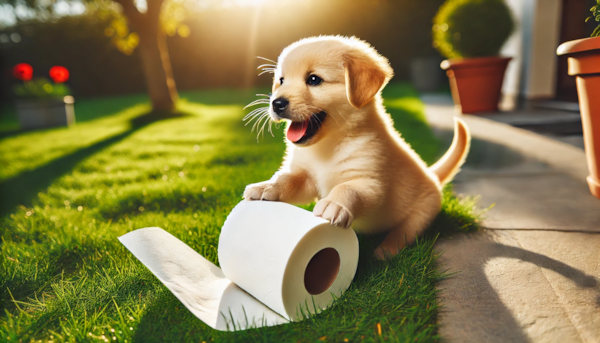
Bringing a new puppy home is exciting, but it also comes with the challenge of potty training. This guide will walk you through the process from start to finish, offering practical tips and proven strategies to ensure your puppy learns quickly and effectively.
Table of Contents
Understanding the Basics of Potty Training
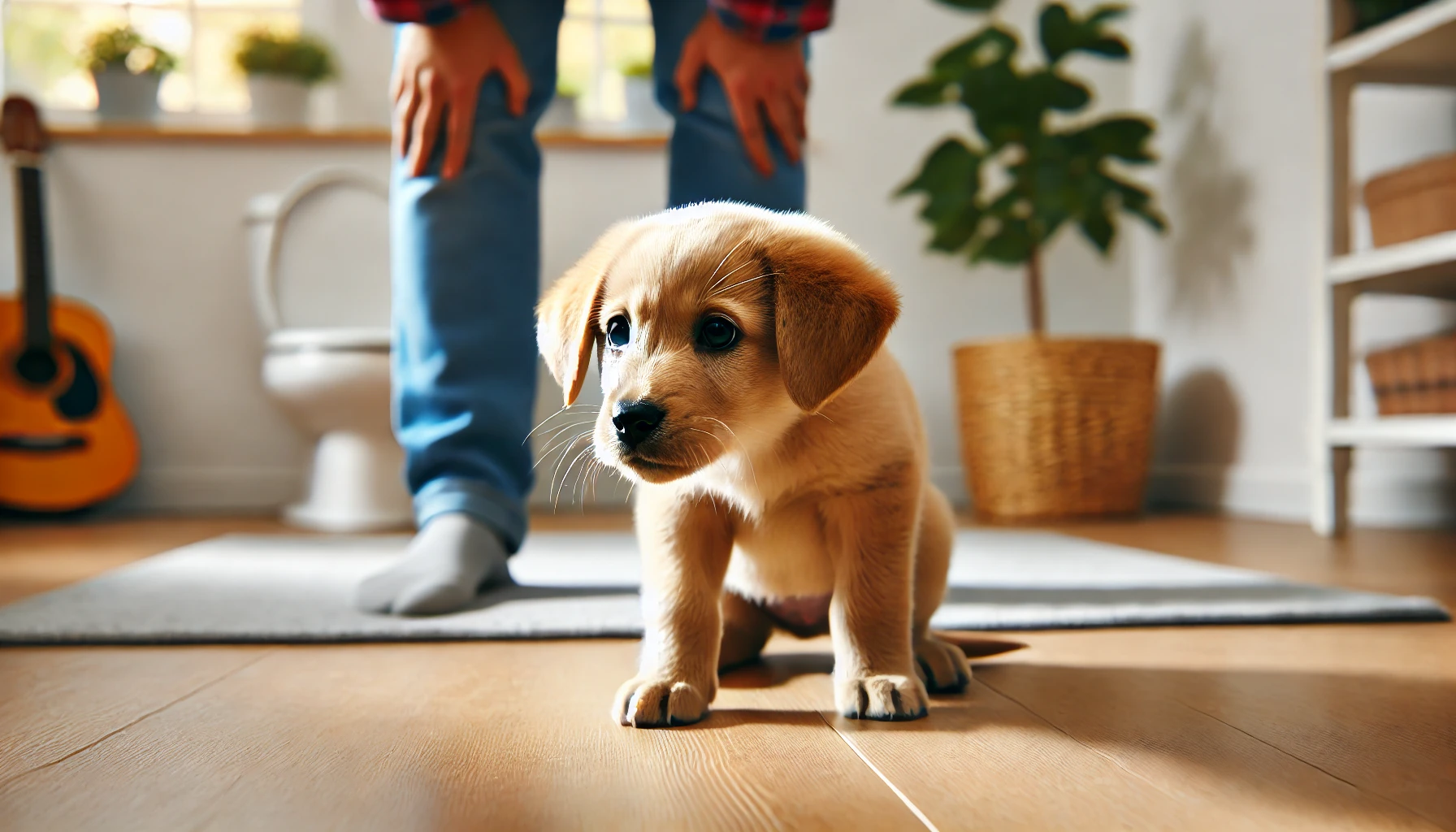
When you bring a new puppy into your home, potty training should be at the top of your to-do list. It's not just about keeping your house clean; it's crucial for establishing a loving and stress-free relationship with your new furry friend. Here’s what you need to grasp to set the stage for potty training success.
Consistency and Patience are Key
Puppies thrive on routine and predictability. By being consistent with your potty-training schedule, you help your puppy understand when and where it's appropriate to go. This means taking your puppy out at the same times each day — including first thing in the morning, after meals, and before bedtime. Patience is also critical, as all puppies learn at their own pace. Some might catch on within a few weeks, while others may take several months.
Understanding Your Puppy’s Body Language
Puppies will often show signs when they need to go out. These can include sniffing around, circling, squatting, or heading towards the door. By paying close attention to these signals, you can preempt accidents and guide them to the correct spot in time. Recognizing and responding to these cues quickly is vital for effective potty training.
Preparing for Potty Training
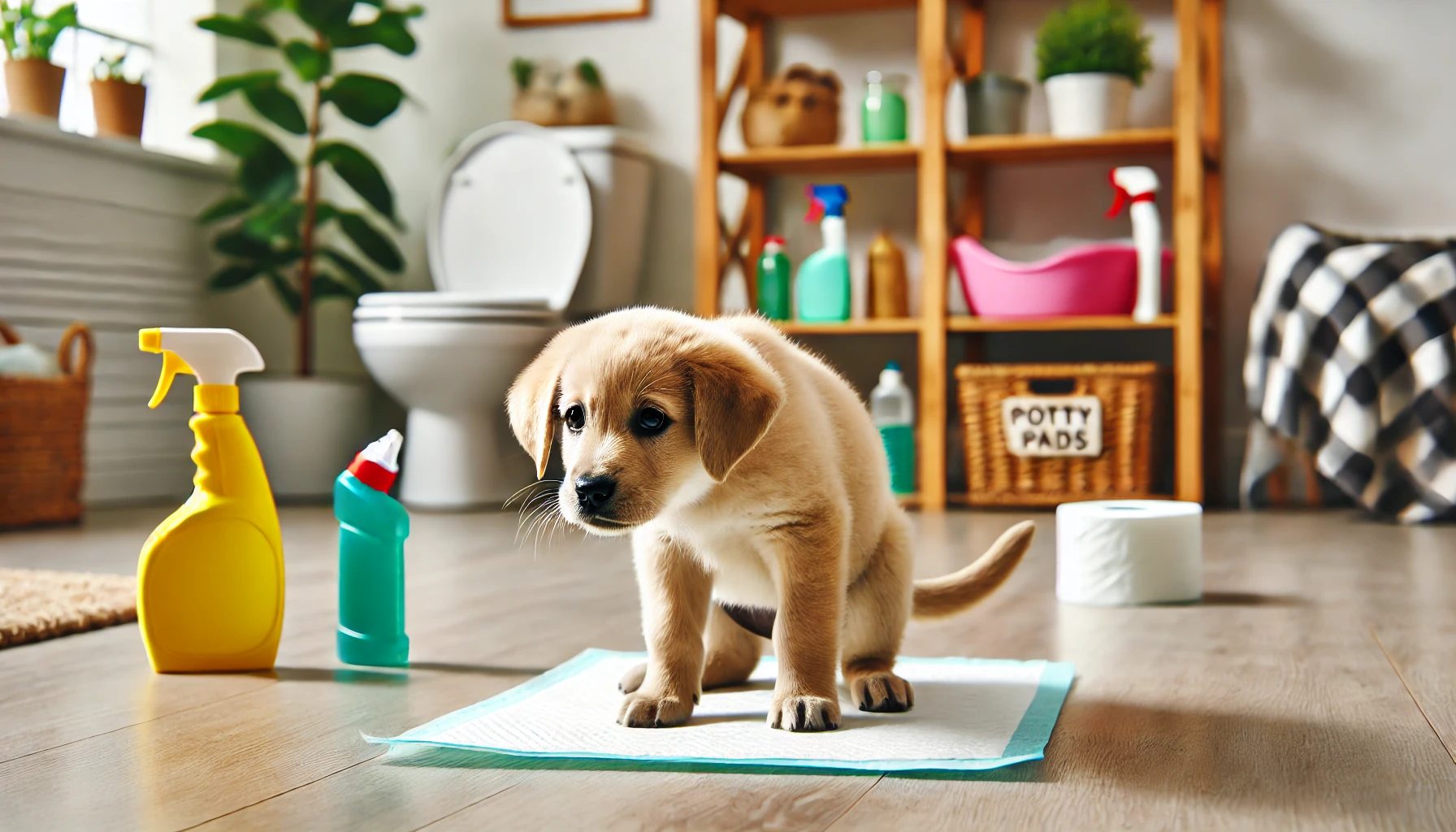
Before you get into the actual potty-training process, it’s essential to prepare both yourself and your environment. Setting everything up right from the start can make the training process much smoother for both you and your puppy.
Choosing the Right Potty Area and Cleaning Products
Selecting a designated potty area is crucial. Whether it's a specific corner of the backyard or a puppy pad in the bathroom, consistency in location helps your puppy learn where to go. Make sure the area is easily accessible to your puppy at all times. For cleaning up accidents, invest in an enzymatic cleaner designed specifically for pet stains and odors. These cleaners break down the waste and neutralize odors, preventing your puppy from returning to the same spot to relieve themselves.
Setting Up a Routine
Puppies do best on a regular schedule. This includes feeding, potty breaks, playtime, and sleep. Determine the best times to take your puppy out—usually after waking up, after playing, and after eating or drinking. Frequent outings decrease the likelihood of accidents and give your puppy plenty of opportunities to get it right. Remember, very young puppies typically need to go out every one to two hours!
Effective Potty-Training Techniques
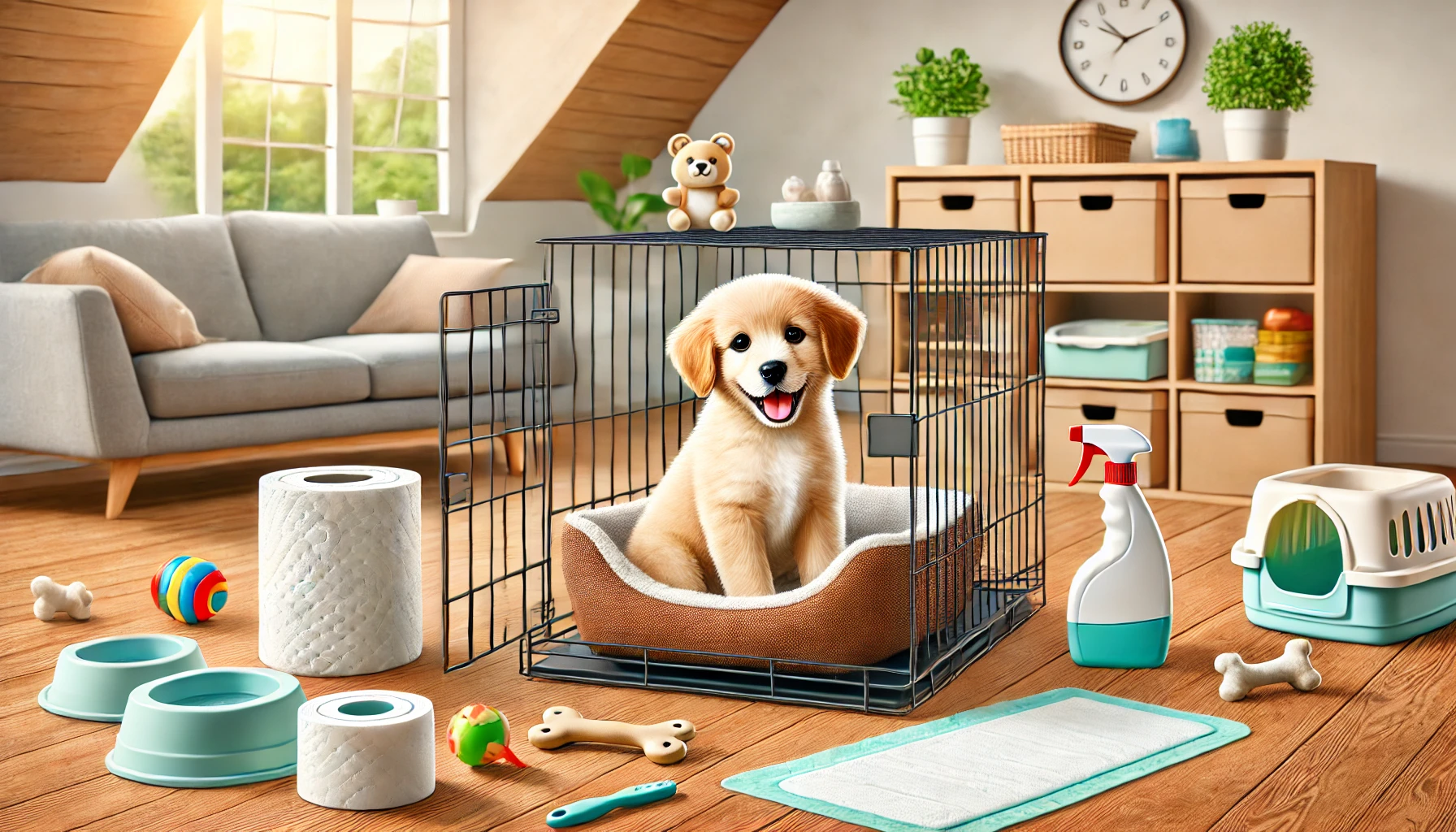
With a solid foundation and a prepared environment, you can now focus on implementing effective potty-training techniques. These methods emphasize kindness and encouragement and help establish a positive relationship with your puppy while they learn where it's appropriate to go to the bathroom.
Crate Training
Crate training is highly effective for potty training because it taps into a puppy's natural instinct to not soil their sleeping area. Start by choosing a crate that's big enough for your puppy to stand up, turn around, and lie down in comfortably, but not so large that they can use one corner as a bathroom. Introduce your puppy to the crate gradually, using treats and meals to create a positive association.
When you can't supervise directly, or when you're away from home, use the crate to prevent accidents. Always ensure that your puppy has the chance to relieve themselves before being placed in the crate and immediately after being let out.
Positive Reinforcement
Whenever your puppy eliminates in the designated potty area, immediately reward them with lots of praise and a treat. This positive reinforcement makes them more likely to repeat the behavior because they associate going potty in the right spot with good things happening. It’s important to be consistent with rewards and to give them promptly after your puppy does their business.
Avoid punishing your puppy for accidents, as this can lead to anxiety and confusion. Instead, if you catch them in the act, calmly interrupt them with a gentle "no" and immediately take them to their potty area. If the accident is discovered after the fact, just clean it up thoroughly and keep an eye out for cues next time.
Using these techniques, you’ll reinforce good habits and help your puppy learn faster. Positive reinforcement and crate training not only support potty training but also aid in overall behavioral training, setting the stage for a well-behaved adult dog.
Using Potty Pads for Indoor Training and Transitioning Outdoors
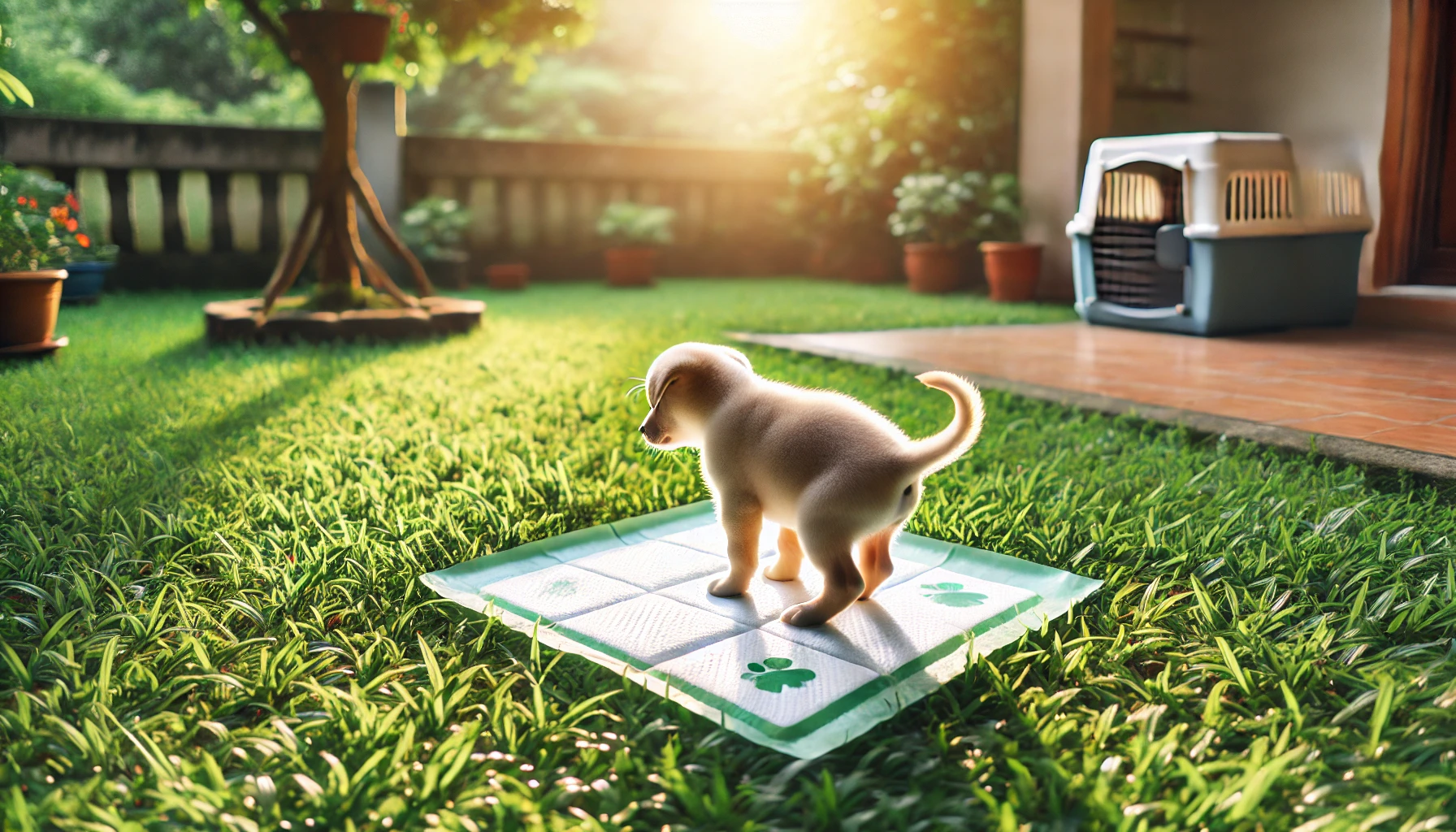
Potty pads can be a practical solution for puppy owners, especially those living in apartments or homes without immediate outdoor access. They provide a clear, designated spot for your puppy to relieve themselves indoors without causing messes around the house. Here’s how to effectively use potty pads and eventually transition to outdoor potty training.
Setting Up Potty Pads
Choose a specific location in your home for the potty pads, ideally a spot that's easy to clean and away from your puppy's food and water bowls. Introduce your puppy to the pads by placing them on the pad after sleep, meals, or playtime—times when they're likely to need to go. Use a cue word like "potty" as they eliminate. Reward them right away after they use the pad to reinforce the behavior.
Maintaining Hygiene
Keeping the area clean is crucial. Change pads frequently to maintain hygiene and reduce odors; this encourages your puppy to continue using them. If a puppy relieves themselves off the pad, clean the area thoroughly to prevent them from returning to that spot.
Transitioning to the Outdoors
Once your puppy is comfortable using the potty pads and is showing consistent success, you can begin transitioning them to the outdoors. Start by moving the potty pad closer to the door leading outside. Gradually, begin encouraging your puppy to go outside by taking them out after waking up, eating, or playing, while still keeping the indoor pads available as a backup.
When your puppy successfully uses the outdoors to relieve themselves, reward them generously to reinforce the behavior. Over time, you can phase out the indoor pads as your puppy becomes more reliable about going outside. This transition requires patience and may take several weeks, depending on your puppy's age and learning speed.
Using potty pads as a training tool offers flexibility and convenience for many owners, and with the right approach, it can also serve as an effective stepping stone to full outdoor potty training.
RELATED: Puppy Leash Training Guide
Common Potty-Training Challenges and Solutions
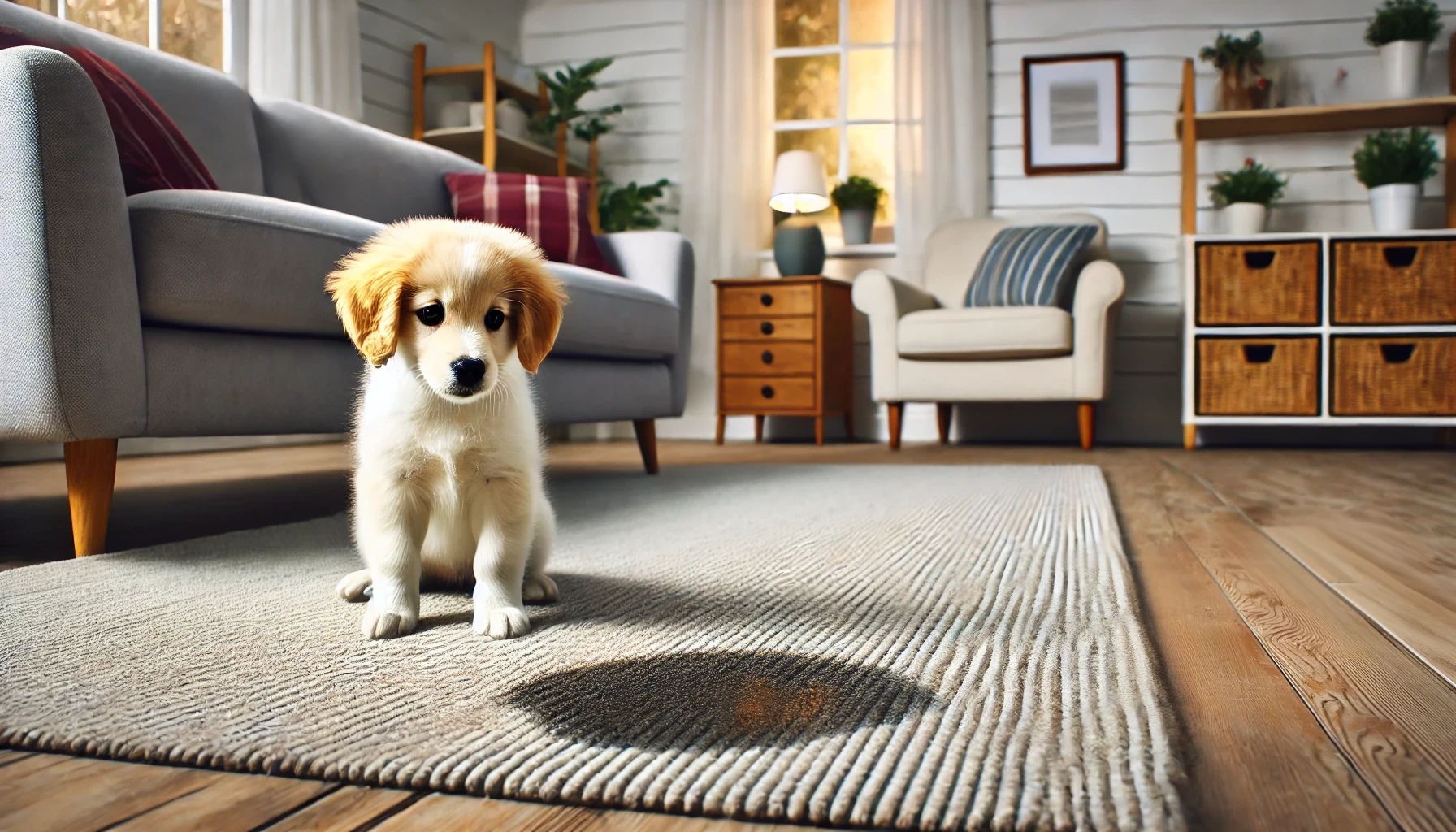
Even with the best preparation and techniques, potty training isn’t always a smooth road. There will be bumps along the way. Here’s how to handle some common challenges that might arise during the potty-training process.
Dealing with Accidents
Accidents are a normal part of potty training and can be expected even after your puppy seems to have mastered their routine. When they do happen, it's important to handle them appropriately:
- Stay Calm: Reacting angrily or with frustration can scare your puppy and create negative associations with potty training.
- Clean Up Thoroughly: Use an enzymatic cleaner to remove stains and odors completely. This helps prevent your puppy from being drawn back to the same spot for future accidents.
- Review and Adjust: Consider whether the accident was due to a lapse in supervision, a break in routine, or simply a part of the learning process. Adjust your schedule or supervision as needed.
How to Handle Setbacks
Sometimes, even after progress, puppies can regress in their training. This can be frustrating, but it's often just a temporary phase:
- Reinforce Training: Go back to basics. Increase the frequency of trips outside, closely monitor for signs that your puppy needs to go and reinforce the desired behavior with rewards.
- Check for Underlying Issues: If setbacks continue, consider whether there are medical reasons such as urinary tract infections, or environmental stressors affecting your puppy. Consulting with a vet can rule out any health issues.
Maintaining Patience and Consistency
Consistency is the key to overcoming these challenges. Keep a regular schedule, use consistent commands, and provide lots of positive reinforcement. Remember that patience is essential—potty training success doesn’t happen overnight.
Maintaining Progress
Once your puppy starts to get the hang of potty training, it's important to maintain and reinforce the good habits they've developed. This continued effort helps solidify their training and ensures long-term success.
Transitioning From Frequent Outings to a Stable Routine
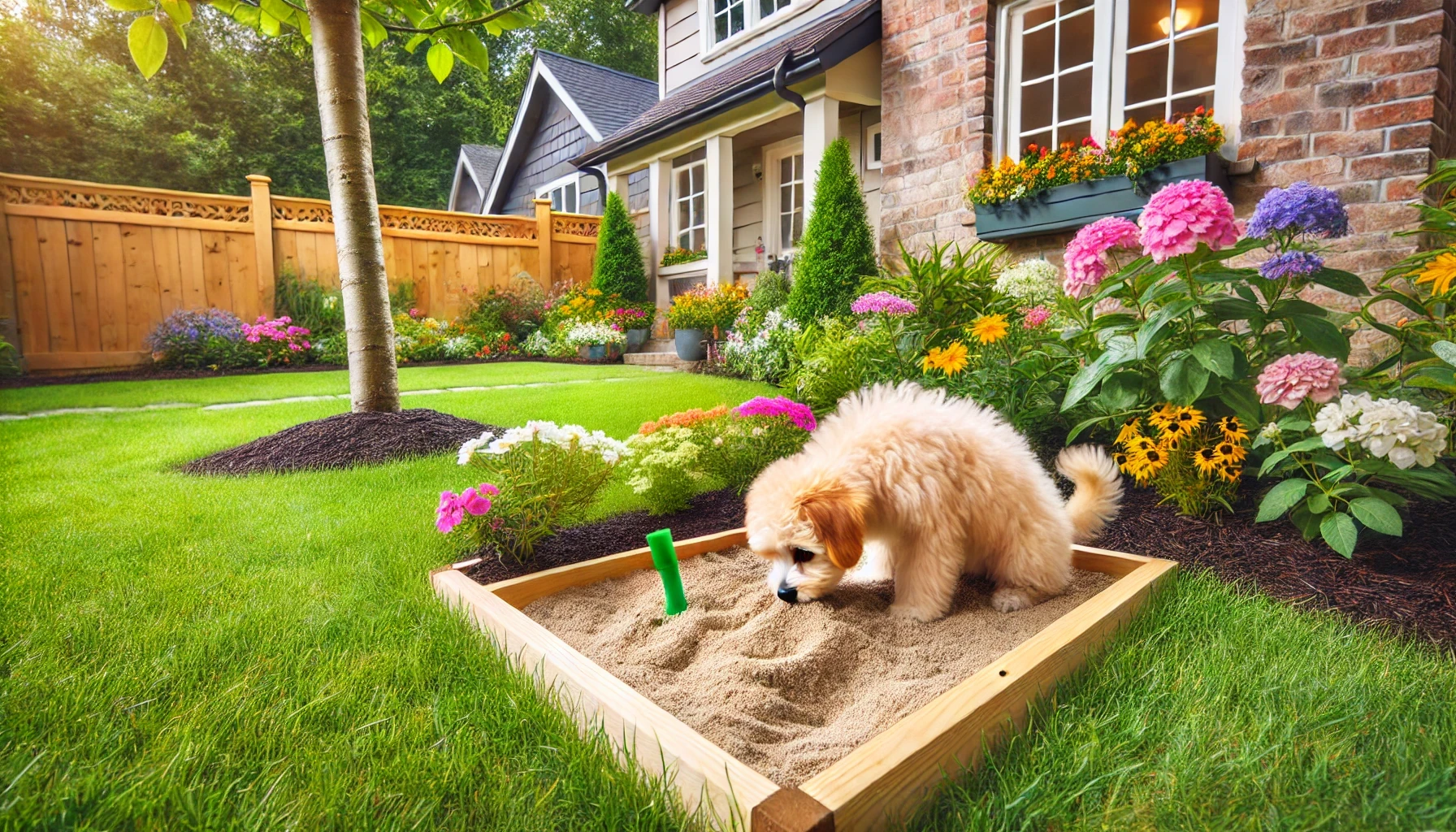
As your puppy matures and gains more control over their bladder, they will need fewer trips outside. Gradually extend the time between outings to help them learn to hold it longer. However, be mindful not to rush this process—extend the intervals slowly and monitor how your puppy copes. If they begin having accidents, it may be a sign you're moving too quickly.
Tips for When You're Not at Home
For times when you can't be home, such as work hours or other obligations:
- Use a Crate or Confined Space: If your puppy is crate trained, this can be a safe space for them while you’re away. Make sure they've had a chance to relieve themselves before being crated and right after you return.
- Consider a Dog Walker or Sitter: If you’re away for longer periods, having someone to take your puppy out for a bathroom break can prevent accidents and help maintain the training consistency.
Wrapping It Up
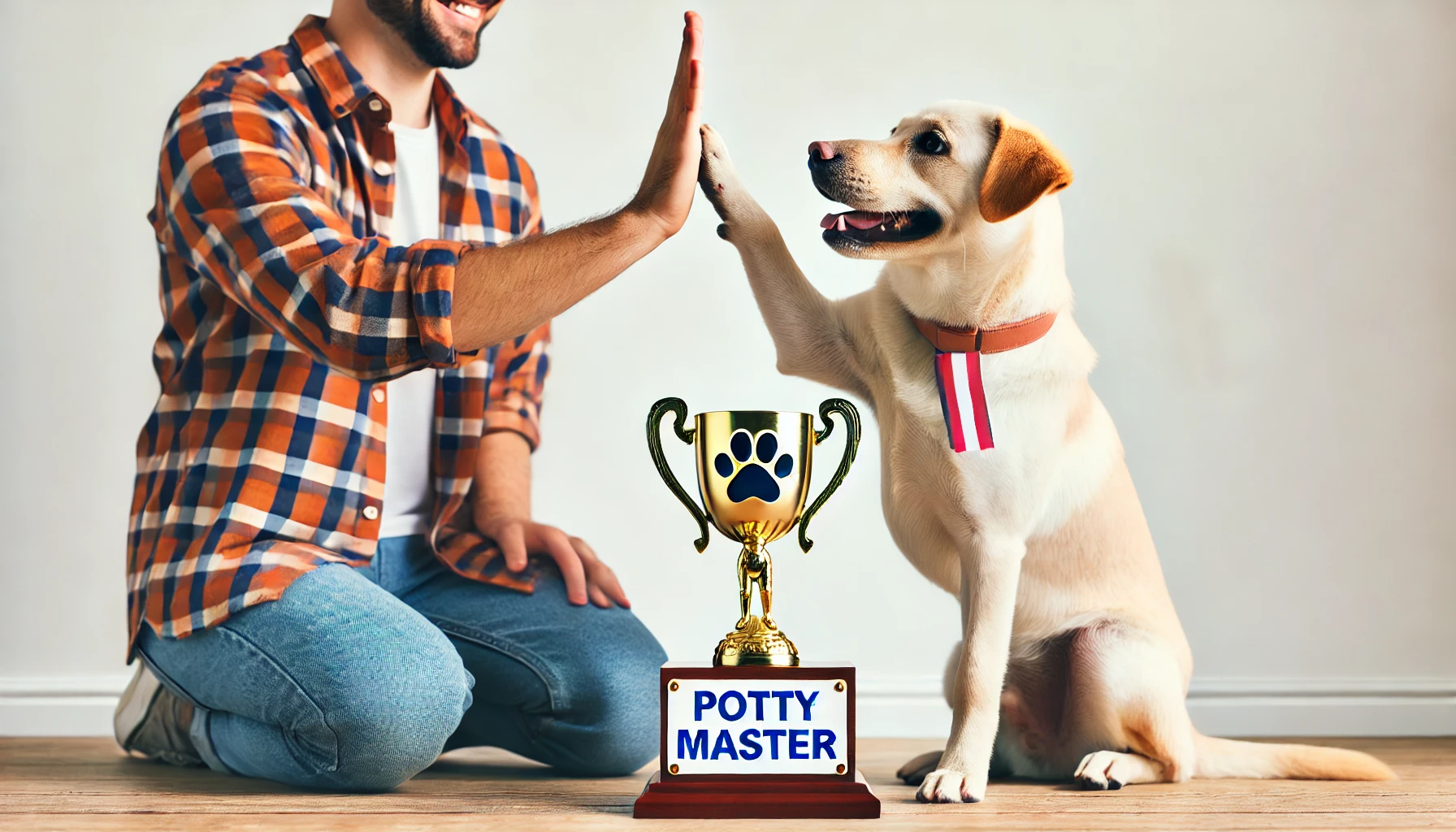
Congratulations on reaching the end of this beginner's guide to potty training your puppy! By now, you should have a solid understanding of the basic principles, practical techniques, and common challenges associated with potty training. Here’s a quick recap of what we’ve covered:
- Consistency and Patience: Establish a routine and stick to it, understanding that patience is key in helping your puppy succeed.
- Effective Techniques: Utilize crate training and positive reinforcement to encourage good habits and make the learning process enjoyable for both you and your puppy.
- Dealing with Challenges: Be prepared to handle accidents gracefully and maintain your calm to avoid setbacks.
- Maintaining Progress: Transition slowly from frequent potty breaks to a more mature schedule and adapt as your puppy grows.
Potty training is not just about avoiding messes—it's also an opportunity to build a bond of trust and cooperation between you and your new companion. With the right approach, you can ensure that this critical aspect of puppy care is successful and stress-free.
Keep up the good work, stay consistent, and soon enough, potty training will be just another milestone you and your puppy have successfully achieved together. Here’s to many happy, accident-free days ahead!
Scroll down to see FAQs about potty training a puppy.
What To Read Next
The 8 Basic Commands in Dog Training
Crate Training Guide
Frequently Asked Questions
At what age should I start potty training my puppy? Potty training should ideally start as soon as your puppy comes home, typically around 8 weeks old. At this young age, puppies are rapidly developing and can quickly learn desirable behaviors with consistent training.
How often should I take my puppy out for potty breaks? Young puppies generally need to go out every one to two hours during the day. As they grow older and their bladder control improves, this frequency can decrease. Always take them out first thing in the morning, after meals, after naps, and before bedtime.
What should I do if my puppy has an accident indoors? Clean up accidents immediately with an enzymatic cleaner to remove odors and prevent re-marking. Avoid punishing your puppy as this can lead to fear and confusion. Instead, reinforce the correct behavior by taking them to their designated potty area regularly.
How long does it typically take to fully potty train a puppy? The duration varies from one puppy to another. Most puppies can be substantially potty trained by 4-6 months of age, but some may take up to a year. Consistency, patience, and positive reinforcement are key factors in how quickly potty training can be achieved.
Can I use both potty pads and outdoor training simultaneously? Yes, many owners train their puppies using both methods, especially if they are frequently away from home or live in high-rise buildings. The key is to maintain clear and consistent rules about where it is appropriate to go.
Is it necessary to crate train my puppy for successful potty training? While not absolutely necessary, crate training is a highly effective method that can significantly aid in potty training. It utilizes a puppy's natural instinct to keep their sleeping area clean and helps to establish good habits and prevent accidents.



